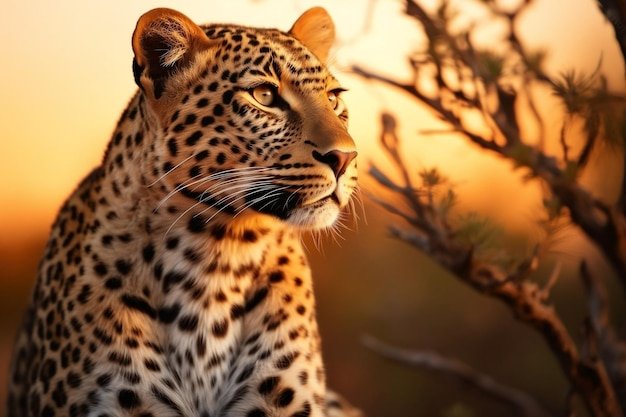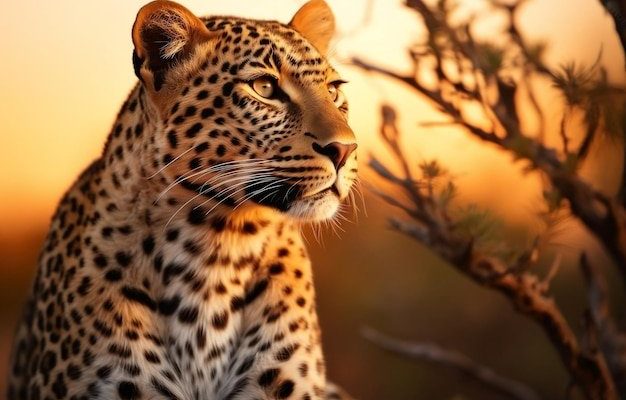
Leopards are known for their cognitive abilities that help them survive in the wild. Like a seasoned chess player, they assess their surroundings and strategize their next move. You might find it interesting that their brainpower extends beyond just hunting; their social interactions and territorial behaviors show a more complex side. Let’s delve into the world of African leopards, exploring how smart they really are.
Understanding Leopard Intelligence
Leopard intelligence isn’t just about how good they are at hunting, although that’s a big part of it. These animals exhibit a diverse range of behaviors that showcase their problem-solving skills and adaptability. For starters, leopards are known to use stealth and strategy when hunting. If they see a potential meal, they often stalk silently, choosing the right moment to pounce. This kind of tactical thinking indicates a keen awareness of their environment and understanding of their prey.
But intelligence goes beyond the hunt. African leopards have been observed using tools in a sense. For instance, they might drop prey from a height to break bones and access the nutritious marrow inside. This behavior demonstrates not just instinct but also a level of cognitive processing—realizing that using their environment can help them attain food more efficiently.
In the wild, survival often hinges on learning from experiences. Young leopards learn critical survival skills from their mothers, such as how to climb trees to avoid larger predators or stow their meals out of sight. They watch, imitate, and gradually master these skills, which shows their capacity for learning and memory.
Social Behavior and Problem Solving
African leopards are generally solitary animals, but their social behaviors can reveal a lot about their intelligence. These cats communicate through vocalizations, scents, and body language. For example, they use scent markings to define their territory and avoid conflicts with other leopards. This understanding of personal space and boundaries is a sign of social awareness and intelligence.
Have you ever noticed how leopards are great climbers? They often stash their kills in trees, preventing scavengers like hyenas from stealing their hard-earned meal. This behavior isn’t just about being clever; it’s a strategic method of securing food. By climbing up high, they keep their prey hidden and safe, displaying both problem-solving skills and an awareness of their environment.
On top of that, African leopards have shown impressive adaptability in urban areas. When their natural habitats are encroached upon, some leopards have adjusted their routines to thrive in these new conditions. They might hunt at night when cities are quieter, showcasing their ability to problem-solve and adjust to environmental changes.
Learning from Experience
Leopards are not born knowing how to hunt; they learn from trial and error. This learning process is a crucial part of their cognitive development. Young leopards often engage in play, which serves as practice for real-life situations. Through play, they sharpen their skills and become better hunters.
Interestingly, researchers have found that leopards can remember past experiences and apply that knowledge to future situations. For example, if a leopard fails to catch prey in one area due to loud noises, it might avoid that spot later on. This ability to learn from mistakes shows a level of intelligence that is quite advanced in the animal kingdom.
Moreover, the environmental changes caused by human activities have forced leopards to adapt their hunting strategies. They might learn to target different prey species or adjust their hunting times based on human activity. This flexibility in behavior highlights their cognitive ability to respond and evolve based on their experiences.
Comparing Intelligence with Other Big Cats
You might be wondering, how does an African leopard stack up against other big cats, like lions or tigers, in terms of intelligence? While all big cats have unique adaptations and skills, leopards are particularly known for their solitary hunting techniques and stealth. Unlike lions, who rely on teamwork and social structures, leopards excel as individual hunters.
In comparison to tigers, leopards are arguably more adaptable to diverse environments. Tigers may have stronger physical prowess, but leopards’ ability to thrive in various habitats, including urban settings, speaks to their ingenuity. They can make the best out of any situation, whether they’re hunting in dense forests or open savannas.
Additionally, leopards’ social intelligence diverges from that of lions. Lions have a defined social structure within prides, while leopards tend to be more solitary and independent. This independence requires them to be highly resourceful, relying heavily on their cognitive abilities to survive without the support of a group.
The Role of Memory in Leopard Survival
Leopards possess a strong memory, which is vital for their survival. They need to remember where they’ve hidden food, the locations of water sources, and even the territories of rival leopards. This ability to recall critical information can make the difference between life and death in the wild.
For instance, if a leopard has successfully hidden its prey in a specific tree in the past, it’s likely to remember that location for future reference. This memorization is a form of spatial intelligence that helps them navigate their environment effectively.
In addition to remembering physical locations, leopards also have to remember personal experiences, such as encounters with other animals. Learning to recognize threats and opportunities is crucial. A leopard that recognizes the sound of a nearby competitor or the presence of a potential meal can react more swiftly, improving its chances of survival.
Human Interactions and Perceptions
Human interactions with African leopards often highlight their intelligence—and sometimes misunderstand it. In areas where leopards live close to human populations, conflicts can arise. Farmers, for instance, might see leopards as threats to their livestock, while conservationists recognize the need to protect these intelligent creatures.
Understanding leopard behavior is essential for reducing conflicts. When people learn about the leopards’ cognitive abilities, recognizing their patterns and habits, they can develop strategies to coexist peacefully. For example, creating barriers or using guard animals can help protect livestock without harming the leopards.
Education plays a vital role in altering perceptions about leopards. When communities understand the intelligence and importance of leopards in the ecosystem, they might be more willing to protect them. Developing empathy for these animals can foster a healthier interaction between humans and leopards.
African leopards are remarkable creatures, exhibiting a rich tapestry of intelligent behaviors. From their clever hunting strategies to their social interactions and problem-solving skills, leopards show us how complex and nuanced animal intelligence can be.
Their ability to adapt to changing environments and learn from experiences highlights their cleverness and resilience. As we work to coexist with these incredible animals, understanding their intelligence is key. Remember, these sleek cats are not just mere predators; they are thinkers, strategists, and survivors in the wild.
So, next time you hear about an African leopard—think beyond the might of its muscles. Recognize the intelligence behind those piercing eyes and appreciate the sophisticated world they navigate every day.

